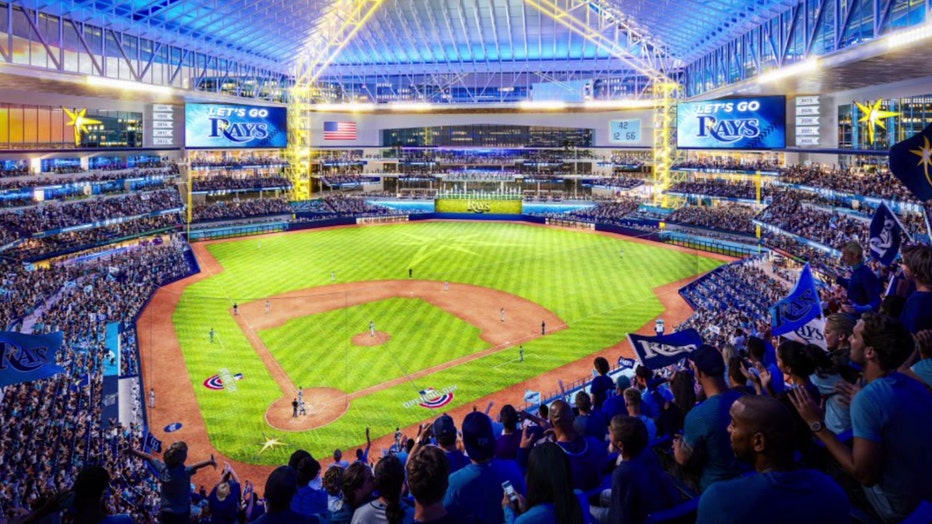St. Pete releases terms of agreement between the city and Tampa Bay Rays for stadium plans

New details released on Rays stadium deal
St. Pete has released the terms of agreement between the Rays and the city for the Rays new stadium.
ST. PETERSBURG, Fla. - The term sheet agreed upon between the City of St. Petersburg, Pinellas County and the Tampa Bay Rays for a new stadium showcases the desire of the municipalities to carve an identity for their Major League tenant and that of the Rays to gain multiple revenue streams that currently do not exist.
The agreement, which is not yet signed by either side, includes several sections on marketing, saying the city, Visit St. Pete-Clearwater and the Rays will agree on a marketing plan, which must include a tourism booth at the ballpark, and at least one home game a year during which the Rays will wear uniforms that say "St. Pete" on them.
Even to this day, major outlets, like the Athletic, still say things like "Tampa is close to another disappointing end," when the Rays don't even play there.
RELATED: Rays announce plans for new $1.3 billion stadium in St. Petersburg: 'Our Rays are here to stay'
"I am sure it gets some people more than others. The reality is we are a region," said Pinellas County Administrator Barry Burton. "This does bring some real clear identity for Saint Petersburg, Pinellas County. We're certainly going to have our marketing pieces as part of that."

Under the current framework, the Rays will have the exclusive rights to sell the stadium name and retain all revenue. The Rays will retain all the money the stadium generates, from tickets, to hot dogs to tee shirts.
Starting in 2034, the county will get $1,000,000 per year from the Rays, but the city won't. That's because the county will pay $312.5 million up front, while the city pays $287.5 million up front.
"If you take the amount we're putting in minus the $25,000,000, it's an equal amount," said Burton. "And so that was symbolic and in some ways, but it was important to have enough bonding capacity upfront to make the deal happen."
READ: St. Pete Mayor Ken Welch reflects on growing up in Gas Plant District, future of city
The county's side will come from tourist and redevelopment taxes, while the city's will come from bonds, which are loans a local government takes out for things too expensive to pay for with regular taxes.

"Any of the new taxes generated from the development will be set aside to pay off the debt. So a rank and file everyday taxpayer isn't going to be impacted," said Toby Rittner, the CEO of the Council of Development Finance Agencies.
The Rays will be responsible for at least $700,000,000, and any cost overruns.
"You're seeing the fruits of a lot of discussions and negotiations and back and forth, I think it's good for our residents," said Burton. "I think it's good for the region."
They will also have to give the city 12 days a year to use the stadium for public events.

